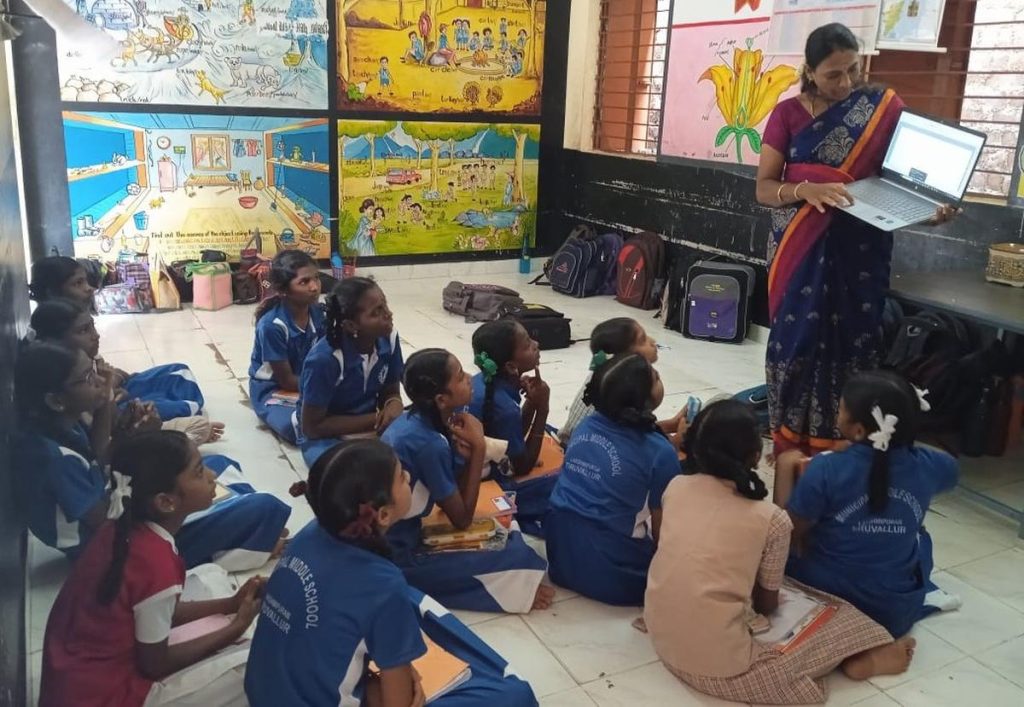The Road to ‘Universal Digital Literacy’ in India
Nearly 47% of government schools still lack internet connectivity, with rural areas in Bihar and Jharkhand reporting only 28% having functional computer labs
Introduction: The Digital Imperative
As the world undergoes rapid digital transformation, digital literacy is no longer a privilege but a necessity. In India, where technology is reshaping education, employment, and governance, digital literacy is a powerful tool for empowerment. The government’s ‘Digital India’ initiative, complemented by programs such as ‘Pradhan Mantri Gramin Digital Saksharta Abhiyan’ (PMGDISHA) and ‘Samagra Shiksha Abhiyan,’ has made commendable progress in bridging the digital divide. However, to make digital literacy truly universal and impactful, a multi-stakeholder approach is required—one that integrates cutting-edge solutions, stronger infrastructure, and targeted interventions for marginalized communities.
Government Efforts: A Strong Foundation
The Indian government has recognized digital literacy as fundamental to national progress. The Union Budget 2024 allocated ₹6,000 crore towards digital learning and ICT infrastructure, a step in the right direction. States like Kerala (IT@School), Tamil Nadu (EMIS & Smart Classrooms), and Telangana (T-SAT Network & Mana TV) have pioneered state-level digital literacy models, yielding measurable improvements in student engagement and learning outcomes. Programs like ‘Digital Essentials’ by the Coding for All Foundation further complement these initiatives by equipping students with essential digital competencies.
Global comparisons reinforce the significance of such initiatives—countries like Finland and Estonia, with structured nationwide digital education programs, boast nearly 100% digital literacy. India must now work towards replicating such success on a broader scale.
The Challenges: Bridging Gaps and Overcoming Barriers
Despite progress, India faces major roadblocks:
- Infrastructure Deficiencies: Nearly 47% of government schools still lack internet connectivity, with rural areas in Bihar and Jharkhand reporting only 28% having functional computer labs (Ministry of Education, 2024). Without robust infrastructure, digital literacy remains an aspiration rather than a reality.
- Teacher Training Deficit: Only 23% of teachers have received formal digital literacy training, and among them, only 42% actively use digital tools in classrooms (NCERT, 2023). Without empowered educators, digital education cannot reach its full potential.
- Digital Ethics and Cybersecurity Concerns: A 2023 UN report found that 58% of students worldwide encounter fake news or misinformation, while 37% face cyberbullying. Countries like Germany have successfully addressed this issue by integrating mandatory digital ethics courses in schools, an approach India must adopt.
Innovative Pathways: The Road Ahead
While government initiatives provide a strong foundation, an innovative and inclusive approach is essential to accelerate digital literacy nationwide. Here’s what can be done:
- AI-Powered Learning & Gamification: AI-driven personalized learning can adapt digital education to individual student needs, as seen in Singapore’s Smart Learning Model. Gamified digital literacy modules can make learning engaging and interactive, especially for young learners.
- Public-Private Partnerships: Collaborating with tech giants like Google and Microsoft can provide access to cutting-edge digital tools. Google’s ‘Internet Saathi’ has trained over 30 million rural women in digital skills—expanding similar programs in schools can create a lasting impact.
- Expanding BharatNet for Rural Connectivity: India’s flagship BharatNet project can be leveraged to provide high-speed internet to underserved schools. Implementing mobile digital labs in remote areas can also bridge infrastructural gaps.
- Structured Teacher Training Programs: India can model its teacher training programs on Finland’s success, where over 85% of educators receive structured digital pedagogy training, leading to seamless digital adoption in classrooms. Government-certified digital literacy training should become a mandatory component of teacher education in India.
Mandating Digital Ethics in School Curricula: Teaching students about responsible internet use, misinformation detection, and cyber hygiene—similar to Germany’s approach—can build a generation of digitally responsible citizens.
Towards a Digitally Inclusive India
Digital literacy is not just about accessing technology but about enabling critical thinking, responsible usage, and lifelong learning. The government’s initiatives have laid a strong foundation, but infrastructure, teacher training, and digital ethics need urgent attention. A holistic approach—combining government policies, corporate collaborations, AI-driven solutions, and ethical digital education—can transform India into a truly digitally empowered nation. As we move forward, the question is not whether digital literacy is essential but how quickly and effectively we can make it a reality for every Indian. The time for action is now.
Five Key Strategies for a Digitally Inclusive Rural India
- Mobile Digital Labs for Rural Schools
Given the infrastructure challenges in rural areas, setting up mobile digital labs—equipped with tablets, internet connectivity, and project-based digital learning modules—can bring digital literacy to the most remote regions. These mobile units, funded through public-private partnerships, can travel across villages, ensuring equitable digital access.
- Localized Digital Literacy Hubs
Establishing Digital Literacy Hubs at panchayat levels, where trained facilitators provide hands-on digital training to students, teachers, and local entrepreneurs, can ensure consistent learning. These hubs can also serve as ICT support centres for rural schools lacking full-time digital infrastructure.
- Public-Private Collaborations for Affordable Digital Devices
Partnering with tech firms to provide low-cost tablets and refurbished laptops to students and teachers in rural India can significantly improve digital access. Initiatives similar to Google’s ‘Internet Saathi‘ program can help distribute affordable digital tools to underserved communities.
- Mandatory Digital Training for Educators
Introducing a nationwide, government-backed digital certification program for teachers—modelled after Finland’s successful teacher training programs—can ensure a high standard of digital education delivery. This program should be integrated into teacher recruitment and ongoing professional development efforts.
- Community-Led Digital Awareness Programs
Engaging local stakeholders, including self-help groups, NGOs, and village leaders, in grassroots-level digital awareness campaigns can bridge the digital literacy gap. These programs can cover topics such as cybersecurity, responsible internet use, and digital opportunities for employment, ensuring that digital literacy reaches beyond students to entire communities.
The Road Ahead
A digitally inclusive India is within reach, but only if proactive measures are taken to overcome existing barriers. While government initiatives have laid the foundation, it is the combined responsibility of policymakers, educators, corporate entities, and civil society to ensure that no one is left behind in the digital revolution. The future of India’s economic and educational landscape depends on how effectively we bridge the digital divide today.
 Times Of Pedia Times of Pedia TOP News | Breaking news | Hot News | | Latest News | Current Affairs
Times Of Pedia Times of Pedia TOP News | Breaking news | Hot News | | Latest News | Current Affairs







